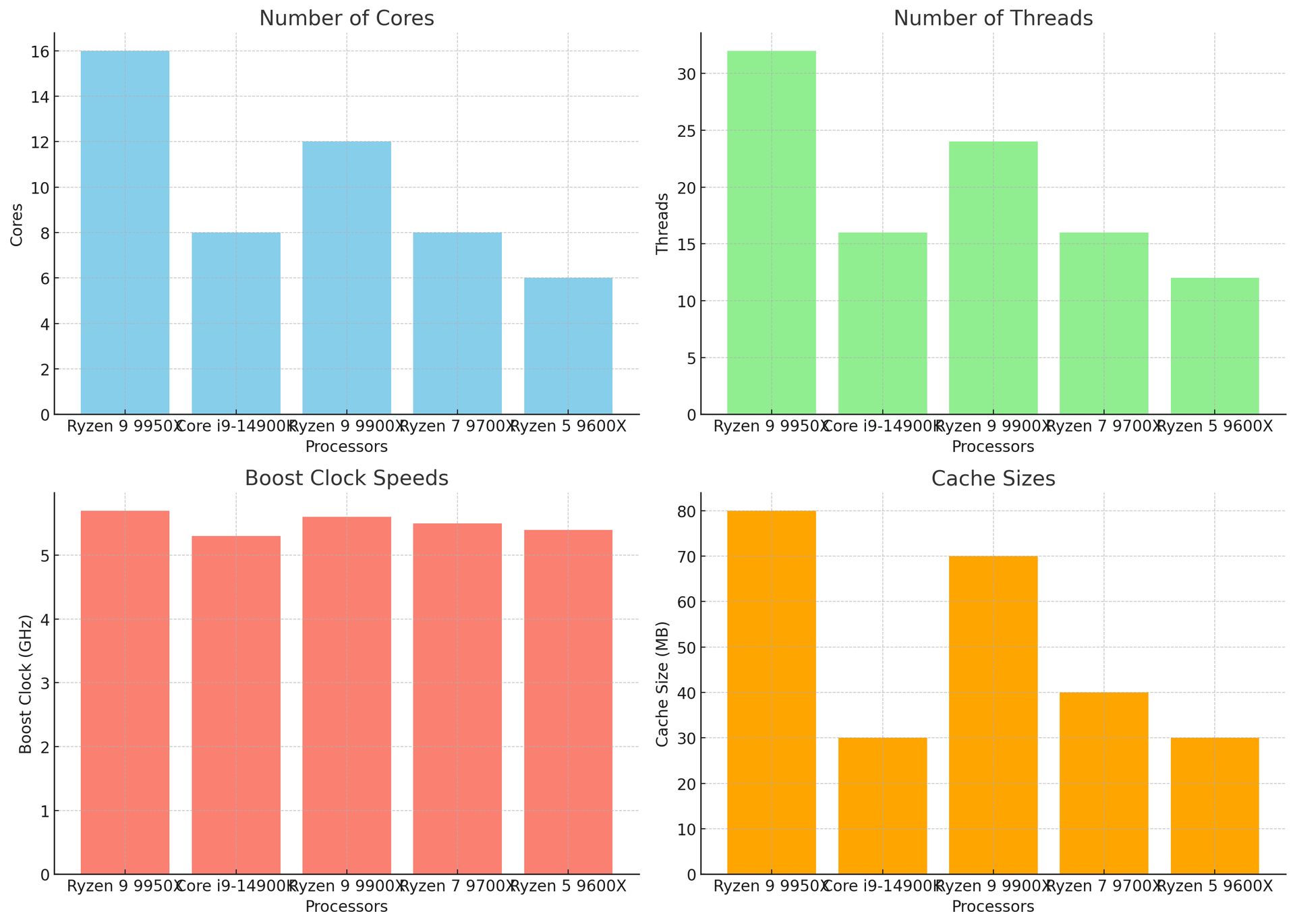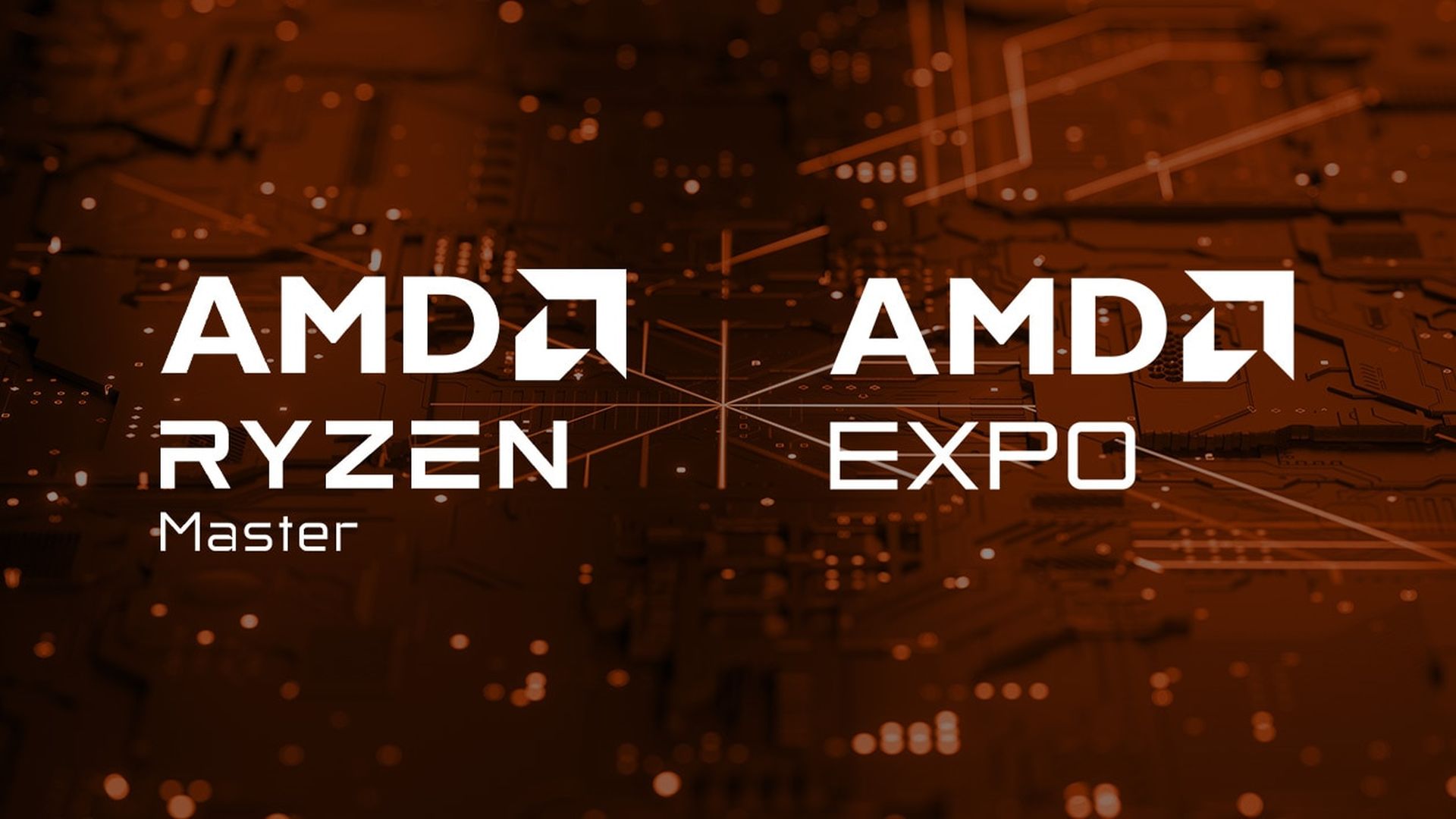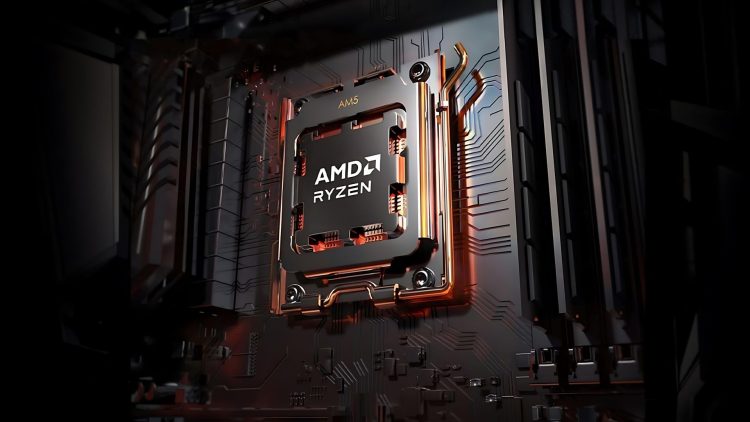AMD’s first flagship processor in the Zen 5 CPU series, the Ryzen 9 9950X, is setting new performance standards for desktop processors. As you know, Intel’s flagship processors currently deliver the same performance as AMD midrange processors. The Ryzen 9 9950X, launching in July, is billed as “the world’s most powerful desktop consumer processor” and leads the new Ryzen 9000 series, which includes the Ryzen 9 9900X, Ryzen 7 9700X, and Ryzen 5 9600X. Based on AMD’s established AM5 platform, the new series promises significant performance gains across a range of computing tasks.
The Ryzen 9 9950X features a robust 16-core, 32-thread architecture, complemented by an impressive 80MB of L2+L3 cache and a 5.7GHz boost clock. These specifications underline a significant leap in processing power, with AMD touting a 16 percent increase in instructions per cycle (IPC) performance over its predecessor, paving the way for improved productivity and gaming experiences. AMD’s senior technical marketing manager for consumer processors, Donny Woligroski, emphasizes the transformative potential of this processor, labeling it a “monster” in terms of competitive performance.
Ryzen 9 9950X leading the Zen 5 revolution
The core of the Ryzen 9 9950X features the Zen 5 architecture, which brings several improvements aimed at maximizing processing efficiency and speed. Despite retaining the familiar AM5 socket with PCIe Gen 5 and DDR5 support, Zen 5 offers significant updates that elevate the CPU‘s capabilities. These improvements include vastly improved branch prediction for better accuracy and reduced latency. The architecture also doubles command and data bandwidth. This provides a significant boost in AI performance.
Comparatively, AMD’s benchmarks highlight the Ryzen 9 9950X’s superiority over Intel’s Core i9-14900K, showcasing up to 56 percent gains in Blender and a 21 percent increase in Cinebench 2024. For gaming enthusiasts, performance metrics indicate a 4 percent to 23 percent improvement in frame rates across popular games like Borderlands 3 and Horizon Zero Dawn. These numbers reflect the processor’s capability to handle diverse and demanding applications with ease.
Here’s a comparison of the Ryzen 9 9950X with other processors using four key metrics: the number of cores, number of threads, boost clock speeds, and cache sizes.

- Number of cores: The Ryzen 9 9950X leads with 16 cores, significantly higher than the Core i9-14900K’s 8 cores and also surpassing the Ryzen 9 9900X, Ryzen 7 9700X, and Ryzen 5 9600X.
- Number of threads: Similarly, the Ryzen 9 9950X boasts 32 threads, doubling the Core i9-14900K’s 16 threads, and also ahead of the other Ryzen models listed.
- Boost clock speeds: The Ryzen 9 9950X has a boost clock of 5.7GHz, which is higher than the Core i9-14900K at 5.3GHz. It also outperforms the other Ryzen 9000 series processors in this category.
- Cache sizes: The Ryzen 9 9950X offers 80MB of L2+L3 cache, far exceeding the Core i9-14900K’s 30MB, as well as other processors in the comparison.
These charts show the specifications of Ryzen 9 9950X and highlight its performance potential across a range of metrics.
The longevity and compatibility of AM5
AMD’s commitment to the AM5 platform further solidifies the Ryzen 9 9950X’s appeal. Initially promised support until 2025, AMD has extended this to 2027 or beyond, ensuring a long lifespan for the AM5 socket. This extended support is in line with AMD’s strategy seen with the AM4 socket, which, introduced in 2016, continues to receive new processor releases. For instance, AMD is also launching new 5900XT and 5800XT processors for AM4 motherboards, indicating a dedication to backward compatibility and consumer investment protection.
This contrasts with Intel’s frequent socket changes, requiring consumers to upgrade their motherboards with new CPU releases. AMD’s approach with extended support for its sockets provides users with a more stable and future-proof platform, allowing for incremental upgrades without the need for a complete system overhaul.
Innovations in motherboard chipsets
Alongside the new Ryzen 9000 series CPUs, AMD is also introducing the X870 and X870E motherboard chipsets. While not mandatory for the new CPUs, these new motherboards come equipped with advanced features such as standard USB 4.0 and PCIe Gen 5 support for both graphics and NVMe. They also support higher EXPO memory overclocking, catering to users looking for maximum memory speeds.

The new motherboards represent an evolution in connectivity and performance potential in line with the advanced features of the Ryzen 9 9950X. This synergy between CPU and motherboard allows users to take full advantage of the advanced performance and features offered by the new Zen 5 architecture.
Launch and market positioning
The Ryzen 9 9950X will launch in July, launching alongside its counterparts in the Ryzen 9000 series. Despite the lack of pricing details, specifications and performance benchmarks position these processors as formidable competitors in the desktop CPU market. Featuring 12 cores, 24 threads, and a 5.6 GHz boost clock, the Ryzen 9 9900X has a 50-watt lower TDP than its predecessor, the 7900X. The Ryzen 7 9700X and Ryzen 5 9600X will continue this trend with competitive core counts, thread counts and boost clocks, offering a range of options to meet different performance needs and budgets.
AMD’s Ryzen 9 9950X and Zen 5 architecture strategy communicate a clear focus on delivering superior performance and long-term platform support. With its powerful features and innovative architecture, will Ryzen 9 9950X continue to demonstrate AMD’s continued commitment to pushing the boundaries of desktop processor performance?
Featured image credit: AMD





